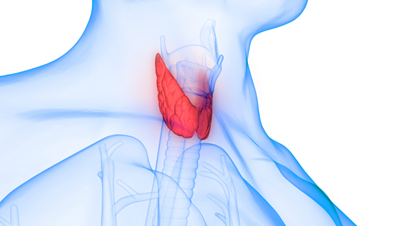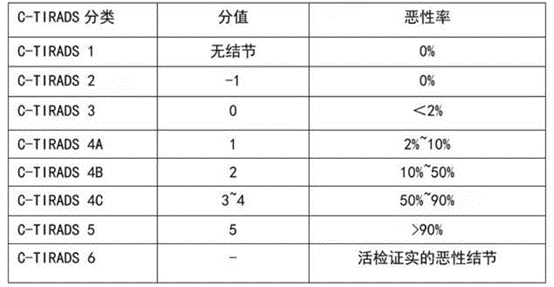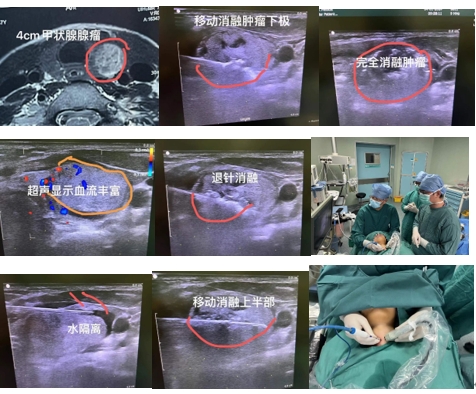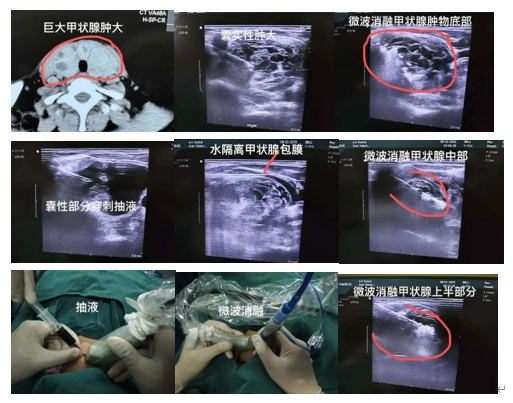The thyroid gland is located in the front of the neck, just below the Adam's apple. It has a butterfly shape and measures about 4 cm in length. As one of the body’s vital endocrine organs, it is responsible for secreting thyroid hormones that regulate metabolism, growth, and development. Thyroid nodules are relatively common, with an incidence rate as high as 18.6% in China. This means that approximately 1 in every 5 people has a thyroid nodule.

Fortunately, the vast majority of thyroid nodules are benign, with only about 5%–15% being malignant, meaning they are cancerous. However, even benign nodules may cause discomfort, such as swelling in the neck, hoarseness, or difficulty swallowing, so they should not be ignored.
What to Do When a Thyroid Nodule Is Detected During a Check-Up
According to China’s Thyroid Imaging Reporting and Data System (C-TIRADS), thyroid nodules are classified into six categories, with higher categories indicating a higher likelihood of malignancy. Clinical recommendations for treatment differ depending on the ultrasound classification of the nodule.

- C-TIRADS Category 3 and below: The risk of malignancy is very low, so regular monitoring and routine check-ups are sufficient.
- C-TIRADS Category 4a: The malignancy risk is still relatively low, and re-examination every 3 to 6 months is recommended to decide whether intervention is necessary.
- C-TIRADS Category 4b and above: The risk of malignancy is relatively high, and a biopsy or surgical treatment is generally recommended.
In recent years, minimally invasive ablation, with advantages such as small trauma, precise efficacy, and high safety, has become one of the preferred treatment options for thyroid lesions. Especially, thermal ablation methods like microwave ablation offer a new option for patients who are unable or unwilling to undergo surgery. Over time, these techniques have evolved from fixed-needle ablation to more flexible "mobile" ablation, which allows for safer and more thorough removal of thyroid tumors.

"Mobile" Microwave Ablation for Thyroid Tumors
Although benign thyroid nodules generally do not require special treatment, this is not an absolute rule. According to the *Thyroid Nodule and Differentiated Thyroid Cancer Diagnosis and Treatment Guidelines (2nd Edition)*, surgery may be an option for benign thyroid nodule patients who meet the surgical criteria.
The guidelines also recommend that for benign thyroid nodules that are progressively increasing in size, causing pressure symptoms, affecting appearance, or causing significant mental distress, and for patients unwilling to undergo surgery, ablation therapy is an alternative treatment option.
Recently, our hospital treated a patient with a nodular goiter. The nodule had caused internal bleeding, leading to an abnormal enlargement of the thyroid gland and noticeable swelling in the neck. For this giant cystic-solid thyroid goiter, we used a combination of aspiration and microwave ablation, successfully shrinking the enlarged thyroid without surgery and immediately relieving the patient’s neck pressure symptoms.

Aspiration and Microwave Ablation Treatment: This method rapidly reduces the enlarged thyroid, relieving neck pressure symptoms without the need for surgery
The exact mechanisms behind the formation of thyroid nodules are not yet fully understood, but it is generally believed to be related to genetic factors, iodine intake abnormalities, radiation exposure, hormone levels, and autoimmune diseases. Therefore, regular check-ups and maintaining a positive mindset are crucial for preventing thyroid nodules.
If a thyroid nodule is detected, there is no need to panic. Even malignant thyroid cancer, often referred to as a "happy cancer," has a relatively high overall cure rate, particularly for papillary and follicular types. Early detection and timely treatment are key to a cure.